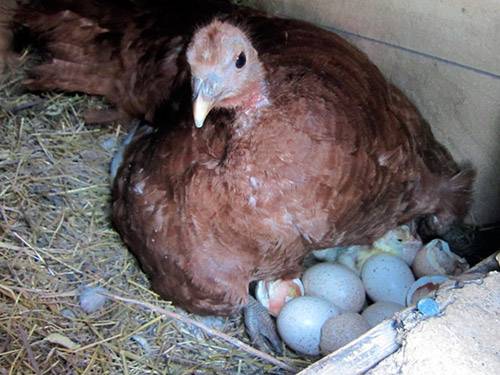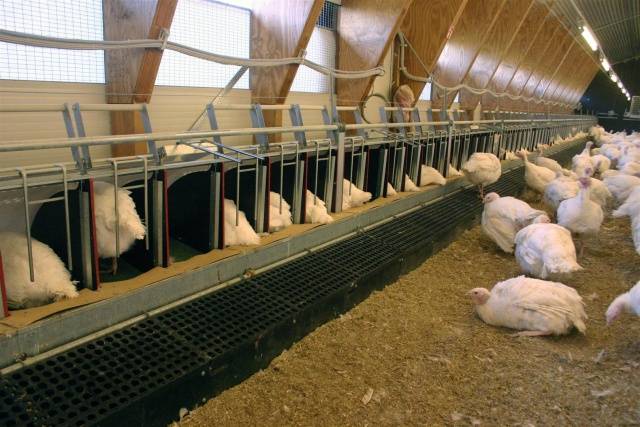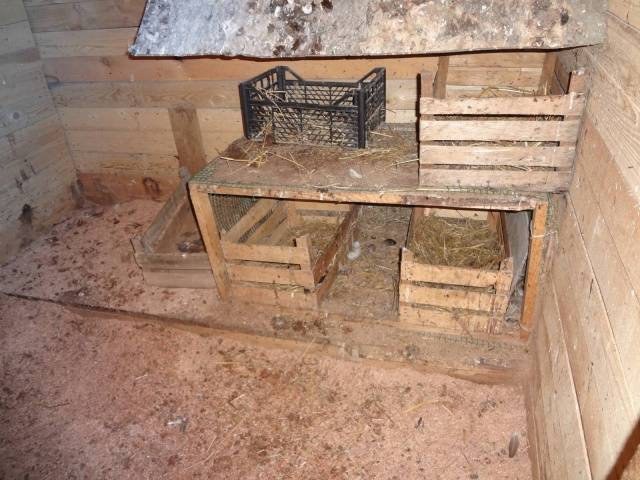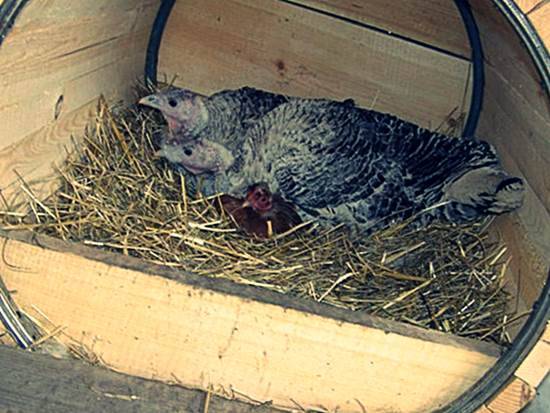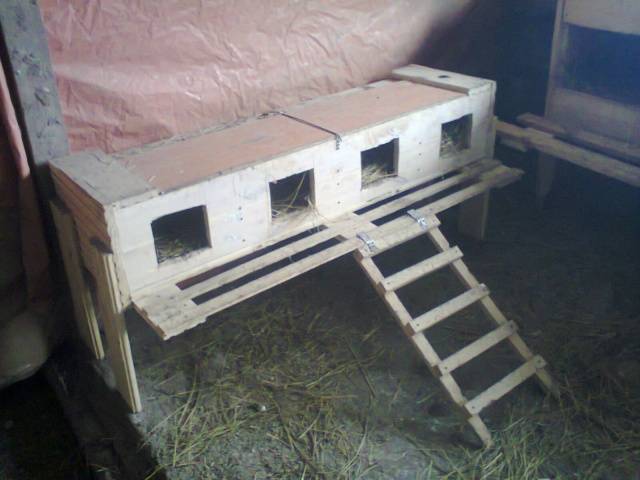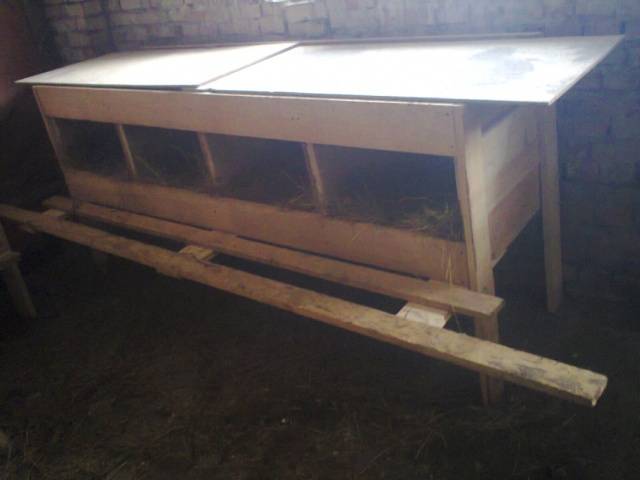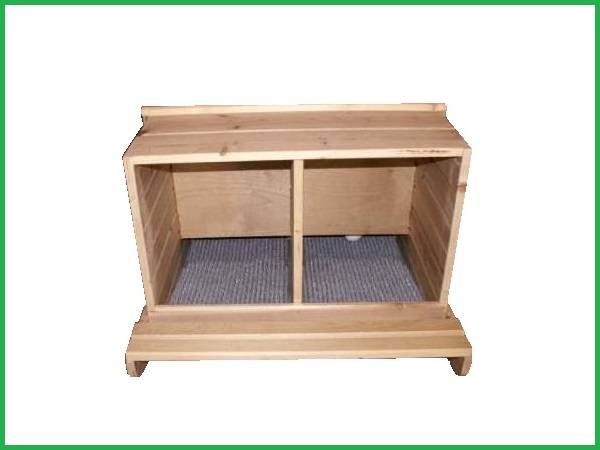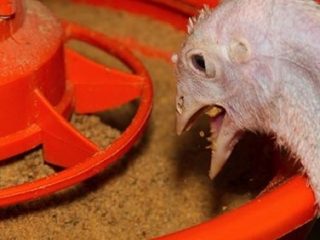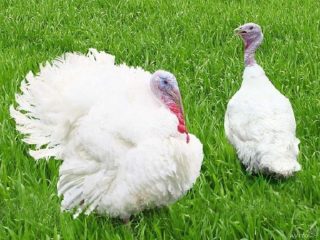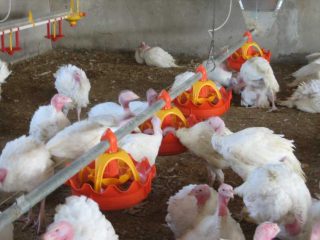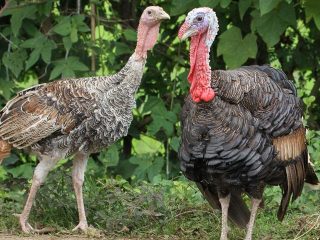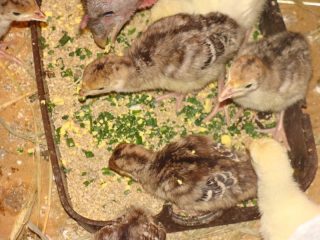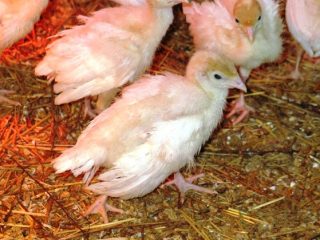To ensure high reproduction of females, they need to be provided with a comfortable place for laying eggs and incubating them. The design of such a place should be approached with special thoroughness. Set up turkey nests in the house long before females start laying. Gradually, the turkeys will get used to them, and the birds will only lay eggs there.
Installation and hardware requirements for the socket
Nests should be installed in the warmest, quietest and darkest place in the house, away from the entrance. Turkeys are calmer there, they feel safe. This arrangement also helps to protect birds from drafts, which means it prevents diseases. Disease deteriorates the quality of eggs.
The nests are positioned so that hens can easily use them, and it is also convenient for collecting eggs, disinfecting, cleaning. The walls should be so high that females cannot see each other.
On the floor, you should first lay branches, on them - straw, then - hay. Sometimes, instead of branches, earth is poured onto the bottom. You can use a soft cloth rug or old clothing as a bedding. Litter provides dryness and warmth, so its quality must be carefully monitored and topcoated as needed. To make the clutch denser and not move apart, it is advisable to make a wreath of straw around the eggs.
Nests are made at a distance of at least 25 cm from the floor. Sometimes they are installed on several floors. The size of the nest should be such that up to 5 females can easily fit in it. Usually they are made in sizes 60 * 60 cm, however, one should take into account the characteristics of the breed - some of the turkeys are much larger in size than the average.
It is advisable to have a sloped roof so that other birds do not interfere with those who are inside. At night, the bird is removed from the nests, the inlets are closed.
What types of nests are there
- open and closed (with and without a roof);
- single-tiered and multi-tiered;
- stand-alone and included in the structure of the nests;
- with or without egg collector;
- professional and handmade.
If the financial opportunity allows, it is better to purchase the nests from suppliers. If there is no possibility, you can make them yourself.
DIY turkey nests
What nests can be made with your own hands
From boxes
The easiest way is to use a standard sized vegetable crate. Better if it is wooden. The box is pre-washed, disinfected and dried. A litter is placed on the bottom. Such a nest can be fenced off with a screen (made of fabric or other suitable material).
From scrap materials
Also, a place for laying eggs can be made from baskets, buckets, wooden barrels, and similar improvised means. The main thing is that the bottom is not metal: some birds bury their eggs so deep that they reach the bottom, if it is made of metal, the egg can be overcooled.
Of bricks
The nest can be crafted with bricks. On the surface where the nest will be located, you need to make a soft layer: put burlap in several layers or a quilted jacket.From above it is necessary to lay bricks (in one row flat), leaving a place between them where the eggs will be folded. In the space left between the bricks, you need to put straw or hay and tamp well. If you plan to install several nests, you need to leave as much space as required, but make partitions between them (cardboard or plywood are suitable).
Nest booth
Another one of the easiest to make turkey nests with your own hands.
Necessary materials
- For walls, floors and ceilings: 1cm plywood (or any other suitable material).
- For the base: wooden blocks - 4 pcs.
- for fasteners: screws, nails, corners, etc.
- for manufacturing: hammer, saw or jigsaw, screwdriver or screwdriver
- to measure: tape or ruler.
Manufacturing mechanism
- Process the material for the walls, floor and ceiling so that there are no splinters, protrusions, cracks. Cut out squares for the walls (the number depends on how many places for masonry are planned to be made in one structure).
- In one of the walls, cut a round or rectangular hole with such a diameter that a brood hen can pass through. The entrance must be done at a distance of 20 cm from the bottom.
- Prepare bars in the amount of 4 pcs. the same height as the walls.
- Make a box of the walls, connect them with self-tapping screws (or other means for fastening) using bars. Attach roof and walls. The "ceiling" can be made reclining - it will be more convenient to clean the nest and collect eggs.
Frame socket
The materials required are the same as when constructing a booth nest. The frame differs from the booth in the absence of a round entrance. It is replaced by a high side.
Manufacturing mechanism
- First of all, a frame is assembled from a bar of a suitable section (for a structure of 4 nests, a section of 50x50 mm is suitable.). Depending on the size of the structure, intermediate supports should be added every 70-120 cm of the frame length.
- Vertical supports are installed on the frame. If the structure provides for a sloping roof, then the length of the rear wall beam should be 10 cm higher than the front one. The height and length of one nest should be at least 60 cm.Accordingly, if a two-tier structure is made of 4 places (two on the lower tier and 2 on the upper tier), the height of the vertical beams of the front wall should be at least 120 cm, the rear one - 130 cm.
- The frame must be sheathed with plywood sheets or other suitable material. Before sheathing, the tree must be sanded with sandpaper. The partitions between the nests should not be transparent.
- A roost 15-25 cm wide should be installed in front of the construction. It can be made from one board, attached to the nest at a distance convenient for planting a bird.
- To prevent the eggs from rolling out, there must be a nut at the entrance.
To make it easier to lift the nest during installation, you can attach a platform to it: a wide board with crossbars.
Nest with egg collector
Suitable when there is no need to incubate eggs, but collection is required. In such cases, it is important that the turkey comes into contact with the eggs as little as possible, for this they should be removed from the nest immediately. This can be done by making a nest with an egg collector.
The main feature is the bottom with a slope. On it, the egg rolls into a specially designated place. To prevent this from happening too quickly, a hole is made in the wall in front of the egg collector.
The base of the nest can be made like a booth. The materials should be taken the same.
Manufacturing mechanism
- Prepare a tree in the same way as for making a booth: process, cut out the walls, floor and ceiling, make a round entrance, prepare the bars.
- Assemble the base from the side walls, front, roof and floor, fastening the parts with self-tapping screws using bars. Attach a half-slope to the resulting structure in such a way as to ensure its slope of 10-15 degrees. The highest part should be at the entrance, the lowest is opposite. You can not do two floors, but immediately attach a half-slope.
- The back wall must be made shorter than the front one so that a turkey egg can pass between it and the floor. To slow down the rate at which the egg rolls into the collection point, a soft plastic, rubber or cloth is attached to the bottom of the back wall. At the bottom, you need to put sawdust or hay so that the egg can roll freely into the collection area without getting stuck anywhere.
- The last step is to attach the egg collector to the back of the structure. You can make it yourself, or use the tools at hand. The main condition is that the eggs do not break when they get there. To do this, the egg container can be upholstered with soft material and lined with sawdust, hay, straw, etc.
The disadvantage of this nest is that the egg collector is located at the back, which excludes the possibility of installing the nest against a wall.
What the egg collector looks like - watch the video:
Nest with pull-out egg collector
Principle of operation: the base is a nest-box, the bottom of which is made of two parts with a gap between them. Each piece is positioned at an angle of 10 or 15 degrees so that the egg rolls into the slit. The hole should be wide enough to allow a turkey egg to pass through.
A box is installed under the bottom, the bottom of which, for the convenience of collecting eggs, is made at a slope in the direction of extension. To prevent damage to the egg, cover the floor of the nest and the egg container with suitable material.
Thus, the egg laid by the turkey rolls into the gap between the parts of the floor, falls into the box under the nest, and rolls along its bottom to the edge. The farmer can only pull out the box, collect the eggs and return it back. Such a place for laying hens can be installed against the walls, which significantly saves space in the house.
Conclusion
If the nest is installed in the right place and meets the requirements of both turkeys and farmers, female productivity will be high.
